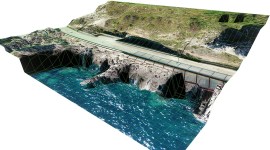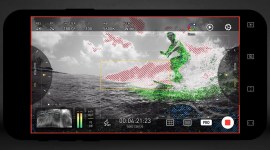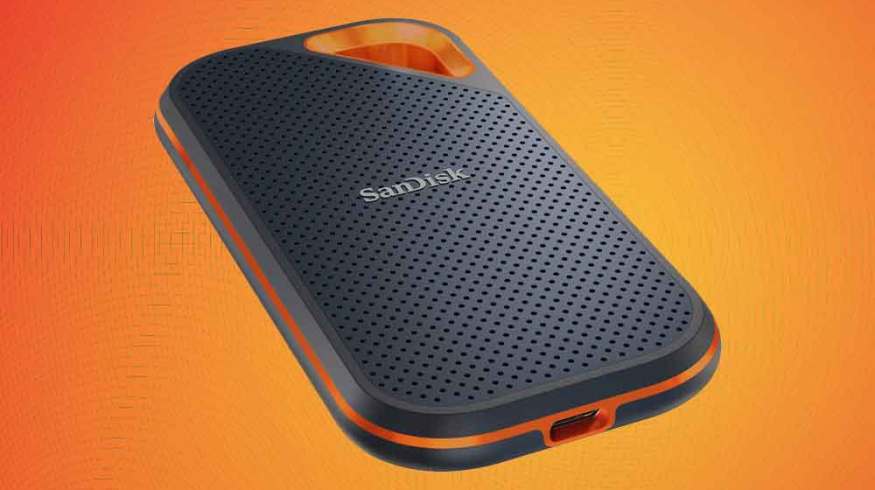
Pushing Today’s Speed Limits: SanDisk’s Extreme Pro Portable SSD V2
The SanDisk Extreme Pro Portable SSD V2 is one of the fastest external SSDs available, but has limited compatibility at the moment.
In recent years, internal M.2 NVMe SSDs have reinvented what “fast” storage is, and we now have drives capable of write speeds up to 6,000 MBps and read speeds of up to 7,000 MBps.
Those numbers are insane, and with prototype PCIe 5.0 drives capable of twice those speeds, it seems like the sky’s the limit. Meanwhile external SSDs haven’t come that far, due to their reliance on USB rather than PCIe, but they’re by no means slow.
In fact, external NVMe SSDs are faster than ever. One of the best external SSDs you can buy right now is SanDisk Extreme Pro Portable SSD V2. The mouthful of a name aside, the drive, released last year, is incredibly fast.
Blazing Fast
How fast, exactly? According to Western Digital, which owns the SanDisk brand, the drive is capable of up to 2,000 MBps read and write speeds. As with most on-the-box claims, that number is reached through internal testing that uses the most advantageous hardware and scenarios to achieve the best possible read and write speeds.
I was shown a CrystalDiskMark screenshot, a storage benchmarking software, that was done internally, and it was slightly above 2,000 MBps. The marketed speed was backed up by AnandTech, using CrytalDiskMark and ATTO, so it checks out. Actual transfer speeds will be a few 100 MBps off, which still amounts to impressive read and write speeds.
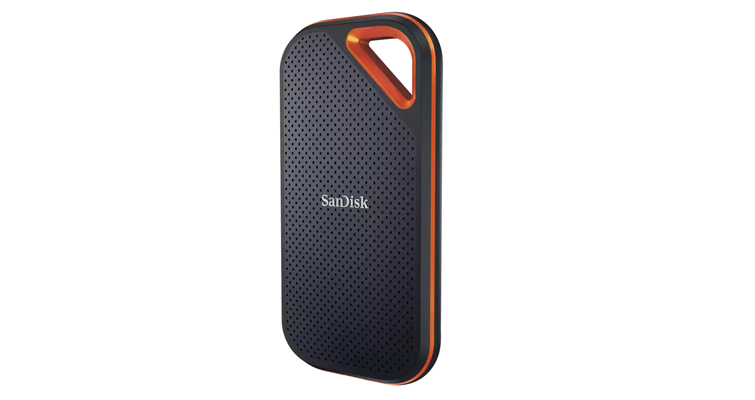
The drive can reach these speeds by taking advantage of the USB 3.2 Gen 2×2 standard. This standard uses two 10 Gbps lanes to achieve a maximum transfer rate of 20 Gbps. (For context, Gbps means gigabits per second, not gigabytes per second (GBps). One gigabit is equal to an eighth of a gigabyte.)
In theory, the max transfer speed comes down to 2.5 Gbps or 2,500 MBps. While the 2,000 MBps transfer speed of the SanDisk Extreme Pro Portable SSD V2 falls short of the max theoretical transfer speed, you’re not likely to find a faster external SSD at the moment.
But, there’s a huge catch that you need to be aware of.
Before you put this in your shopping cart and start dreaming of how the drive will improve your editing workflow, it’s essential to know that the USB 3.2 Gen 2×2 standard has yet to reach mass adoption. Like any new piece of tech, it takes a while for the new standard to become widely available.
That means that if your computer, tablet, or phone lacks the latest USB transfer standard—which it most likely will—you won’t be able to unlock the drive’s full potential. There are ways around it, but you’ll have to upgrade your gear if you want those sweet 2,000 MBps transfer speeds. And, that’s on top of the cost of the pricey drive, which ranges between $210 to $700 depending on storage capacity.
Future-Proofing
I wouldn’t recommend buying the drive unless you have a USB 3.2 Gen 2×2 port computer since you’d only be getting a fraction of the performance.
However, you can do something about it if you have a desktop. You can add a USB 3.2 Gen 2×2 port by purchasing an expansion card. Compared to the drive’s price, the expansion card won’t be nearly as impactful to your bank account, but it is an extra expense.
You’ll need an open PCIe 3.0 x4 slot on your motherboard to add the card, which is why it’s not possible on phones, tablets, or laptops.

The other option is to upgrade your gear. You’ll have to do some research, but you won’t find any compatible Apple devices. Apple’s M1, M1 Pro, and M1 Max-powered computers don’t support this USB standard, nor do any iPhones.
It’s a huge letdown if you edit video primarily on an Apple computer, but the fault lies with Apple, which supports either 3.1 Gen 2 (i.e., 3.2 Gen 2×1) or USB 4 and Thunderbolt 4, both of which are capable of 40 Gbps. It seems like there’s no middle ground.
Android phones don’t support the standard yet either, which only leaves Windows desktops and laptops, of which there are few. I found a few computers with USB 3.2 Gen 2×2 on Microcenter’s website, and they’re all made by Dell.
It’s slim pickings out there.
Backward Compatibility
The transfer speed defaults to the slower USB standard. So, for example, transfer speeds will max out at 10 Gbps—the max theoretical transfer rate for this USB standard—or around 1,250 MBps when using the drive with USB 3.2 Gen 2×1 devices.
USB 3.2 Gen 1×1 devices, with a max transfer rate of 5 Gbps, will top out at around 640 MBps. If you get the drive and don’t have a USB 3.2 Gen 2×2 port, the drive won’t be useless on older tech since it’s backwards compatible.
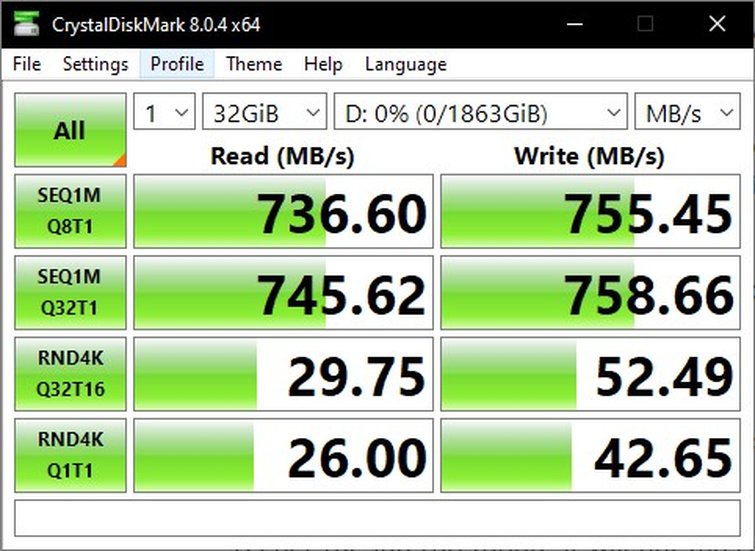
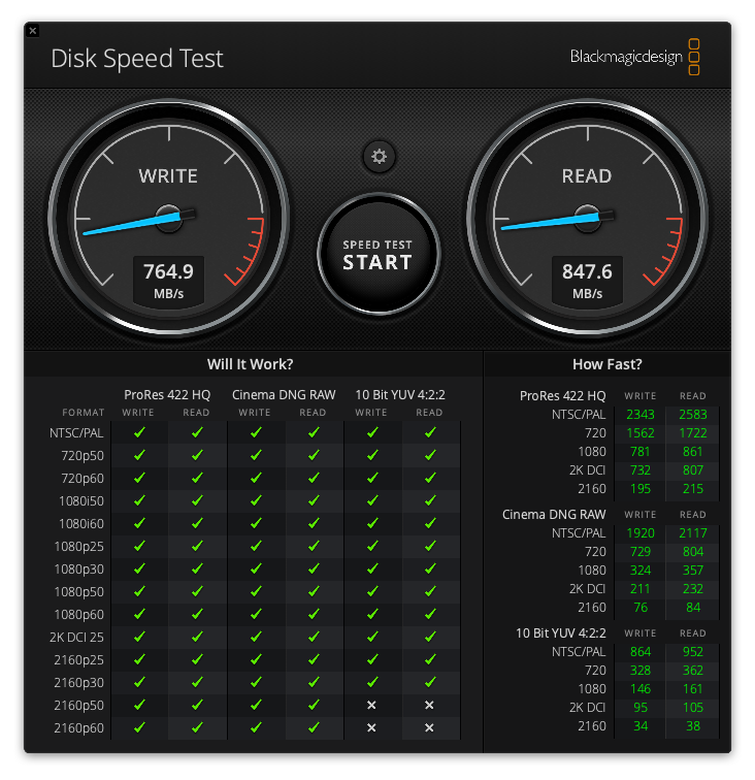
Like most people, I don’t yet own a device with a USB 3.2 Gen 2×2 port, but I could test the drive on my other devices to get an idea of real-world speed when using 10 Gbps connections. Using CrystalDiskMark to benchmark the drive on my PC via a USB 3.1 Gen 2 port (now called 3.2 Gen 2×1), the drive had read/write speeds in the 700 MB/s range, which you can see above (you can learn more about CrystalDiskMark benchmarks mean here).
When testing on my M1 Mac with Blackmagic’s Disk Speed Test, speeds were around 800 MB/s. These speeds are comparable to older 10 Gbps versions of this SanDisk drive, with a max transfer rate of 1,050 MBps. However, a benchmark isn’t an exact indicator of real-world use, which means I also tested the drive by performing several tasks, such as transferring large game files and editing video off the drive.
When transferring DEATHLOOP, one of last year’s best games, the 32GB file transferred from my internal NVMe SSD to the external SanDisk Extreme Pro Portable SSD V2 in less than a minute, with a max transfer speed of around 800 MBps. The speed was about the same when transferring the game file back. Transferring over video files resulted in a similar speed.
While I was expecting fast transfer speeds after running the benchmark, I was pleasantly surprised. But, I still needed to know how it performed when files were being used to edit video in real-time, which is what you’ll likely be using it for.
I recorded about two hours of 1080p/60fps gameplay footage of Monster Hunter Rise on PC (you can do the same with OBS). I used the footage to cut together a video.
While the external SanDisk drive isn’t as fast as my internal Samsung 970 Evo on paper, it felt like I was editing off my internal drive. Cutting the file, adding effects, and altering the playback speed felt as easy as before, and exporting the finished video file took only three minutes.
Though I’ve edited off an SSD before, it wasn’t as fast as this. It always felt like a compromise compared to what my PC could do. It no longer feels like a compromise with barely a noticeable difference in performance between my internal and external drives. And that’s despite not having access to the drive’s full speed.
I can’t even imagine what it would feel like if I could access its full speed.
Is It Worth It?
If you’re lucky enough to have a device that supports USB. 3.2 Gen 2×2, stop reading this right now and pick one up. Only a couple of drives match the speed of the SanDisk Extreme Pro Portable SSD V2, such as the WD Black P50 and the Seagate FireCuda external SSD. Still, they’re designed for gaming—Samsung’s X5 is faster, though it uses a 40 Gbps Thunderbolt 3 connection.
The SanDisk Extreme Pro Portable SSD V2, on the other hand, can withstand dust and water, and it’s got that handy carabiner loop. Whether you’re editing off the drive on your computer or your laptop, you’ll notice the difference. It’s designed to go where you go.
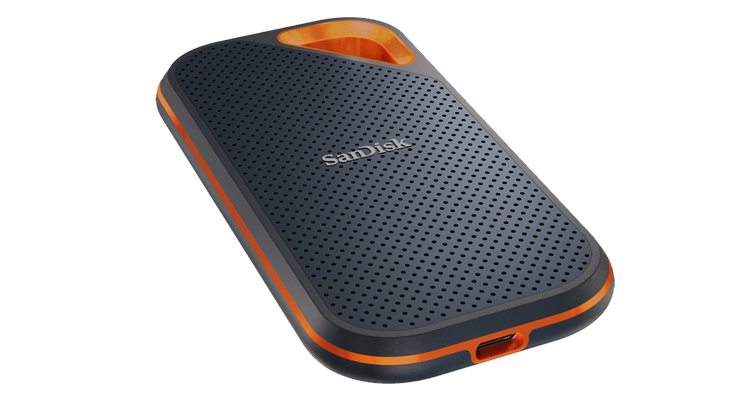
If you don’t have a compatible device, you can buy one or install an expansion card. If you already have a desktop PC with a compatible PCIe 3.0 x4 port, then installing the $50 expansion card is a good idea. But, unless you’re a professional video editor that can expense the cost of buying a new laptop or building a PC, you’re better off with SanDisk’s more affordable, albeit slower, alternatives.
As much as I’d like to recommend the SanDisk Extreme Pro Portable SSD V2 to everyone, it’s a few years ahead of its time. It’s a much better deal to pick up the non-pro SanDisk Extreme Portable SSD V2. This SSD is capable of 1,050 MBps, which matches the speed of the faster Pro SSD when using older 10 Gbps USB ports.
Not only is it compatible with most modern phones, computers, and tablets, but it’s more affordable while having the same form factor and perks as the Pro version. Yes, it’s half the speed of the Pro version, but it’s the next best thing, and will cost you around $100 less.
Need additional gear advice, tips, and tricks? We’ve got you covered:
- Canon Announces New Cinema Camera: EOS R5 C
- Mid-Sized Drones: What Are the Advantages?
- Selling Expensive Gear Online? Resale Outlets May Be Your Friend
- YouTubers Behold: The New Nikon Z9 (And Why It Doesn’t Really Matter)
- What Could We See from Blackmagic Design in 2022?
Cover image via Western Digital.

